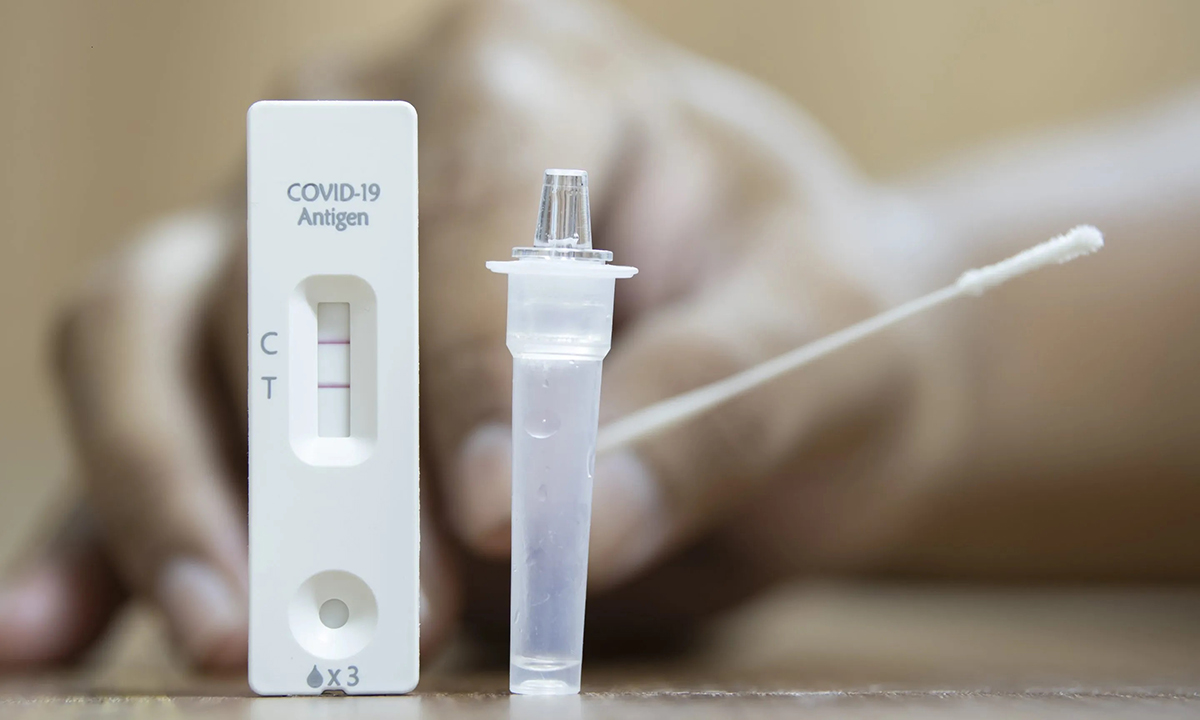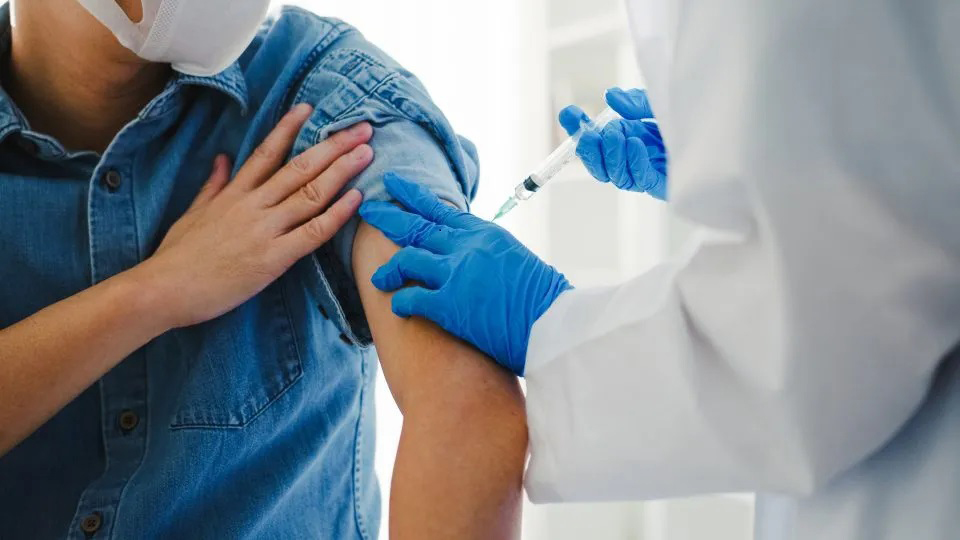
美国宣布新冠公共卫生紧急状态结束后已迎来第二个夏天,病毒学家称之为FLiRT的病毒亚变种引发感染数逐渐上升。
“并不令人吃惊;这种情况一直存在,”南佛罗里达大学(University of South Florida College)公共卫生学院的流行病学家埃德温·迈克尔告诉《财富》,“变异会继续出现。”
导致新冠的病毒SARS-CoV-2奥密克戎变异株已在全球传播近三年。2021年11月,美国疾病控制与预防中心(CDC)将其列为“值得关注的变种”。最初的奥密克戎毒株是B.1.1.529,后来变异成从BA.2.74到XBB.1.16很多亚变体。根据美国疾病控制与预防中心的新冠数据追踪,现在美国主流病株是SARS-CoV-2奥密克戎亚变种FLiRT家族的KP.2,在5月25日之前两周美国新增新冠感染者当中占比29%。
KP.2、KP.3和KP.1.1属于FLiRT家族中的奥密克戎亚变体,这个名字并不可爱。按照美国传染病学会(IDSA)的说法,这一名称偏技术,来自亚变体常见的一对刺突蛋白突变。
“与JN.1相比,这一变种(传染性)没那么高,但免疫逃避性更强,”迈克尔说,“具体如何实现我们还不清楚。”
到目前为止,美国疾病控制与预防中心还未发现FLiRT感染后出现特定症状。可以留意以下新冠常见症状:
• 鼻塞或流鼻涕
• 咳嗽
• 腹泻
• 疲劳
• 发烧或发冷
• 头痛
• 肌肉或身体疼痛
• 再次失去味觉或嗅觉
• 恶心或呕吐
• 呼吸急促或呼吸困难
• 喉咙痛

新冠疫苗能预防FLiRT变异吗?
美国传染病学会表示,KP.2是奥密克戎亚变种JN.1的后代,JN.1在美国的传播一直持续到今年早春,证据显示其变种能逃避疫苗产生的免疫保护。
去年秋天美国疾病控制与预防中心推荐的2023-2024年新冠疫苗主要针对当时流行的奥密克戎亚毒株XBB。医学杂志《柳叶刀》(Lancet)上一项新研究表明,该疫苗对KP.2可能效果有限。
即便如此,范德堡大学医学中心(Vanderbilt University Medical Center)传染病学系教授威廉·沙夫纳还是建议及时接种新冠疫苗。
“目前可用的疫苗对新变种仍能提供明显防护,”沙夫纳告诉《财富》,“一旦感染,疫苗对感染严重疾病风险更高的人群来说尤其重要。”
疾病预防控制中心表示,与65岁及以上的成年人一样,有以下疾病或情况的人罹患新冠重症的风险很高,可能需要额外接种疫苗:
• 癌症
• 慢性肾脏、肝脏或肺部疾病
• 囊性纤维化
• 痴呆症或其他神经系统疾病
• 糖尿病(1型或2型)
• 残疾
• 心脏病
• 艾滋病
• 免疫受损或免疫系统减弱
• 心理健康问题
• 超重和肥胖
• 缺乏体力活动
• 怀孕
• 镰状细胞病或地中海贫血
• 吸烟(当前或以前)
• 实体器官或造血干细胞移植
• 中风或脑血管疾病
• 药物滥用
• 肺结核
即将推出的2024-2025年疫苗有望对FLiRT变种提供更好的保护。迈克尔补充说,已被JN.1感染的人可能对相关变种产生天然的交叉免疫。
“这也是不太可能出现大规模(感染)的原因,”迈克尔说。
FLiRT变种会不会导致今夏新冠疫情爆发?
今年春天,美国病例中FLiRT各变体的比例都有所增加,但1月以来每周检测阳性率稳步下降。
对很多人来说夏天意味着旅行和聚会增加,沙夫纳表示没必要对FLiRT变种感到恐慌,不过应继续保持公共卫生习惯,例如勤洗手以及在弱势人群周围戴口罩,有助于遏制病毒。
“随着时间推移新冠逐渐减弱,但仍在蔓延。”沙夫纳说,“新变种有传染性,能引发疾病。新冠不会像流感一样在夏季消失。”
迈克尔回应说,“也许病例会激增,但不会像去年夏天或前几年夏天那么严重。”
疾病控制与预防中心的记录显示,去年12月以来美国每月新冠引发的住院率一直在下降,1月中旬以来每周死亡率持续下降。迈克尔说,数据表明FLiRT变异株引起的感染没有之前的变异株严重。
“在这一阶段,病毒只是坚持存在,”迈克尔说。“病毒不想杀人,这也是其本身的终结。病毒只是努力保持自身传播。”(财富中文网)
译者:梁宇
审校:夏林
美国宣布新冠公共卫生紧急状态结束后已迎来第二个夏天,病毒学家称之为FLiRT的病毒亚变种引发感染数逐渐上升。
“并不令人吃惊;这种情况一直存在,”南佛罗里达大学(University of South Florida College)公共卫生学院的流行病学家埃德温·迈克尔告诉《财富》,“变异会继续出现。”
导致新冠的病毒SARS-CoV-2奥密克戎变异株已在全球传播近三年。2021年11月,美国疾病控制与预防中心(CDC)将其列为“值得关注的变种”。最初的奥密克戎毒株是B.1.1.529,后来变异成从BA.2.74到XBB.1.16很多亚变体。根据美国疾病控制与预防中心的新冠数据追踪,现在美国主流病株是SARS-CoV-2奥密克戎亚变种FLiRT家族的KP.2,在5月25日之前两周美国新增新冠感染者当中占比29%。
KP.2、KP.3和KP.1.1属于FLiRT家族中的奥密克戎亚变体,这个名字并不可爱。按照美国传染病学会(IDSA)的说法,这一名称偏技术,来自亚变体常见的一对刺突蛋白突变。
“与JN.1相比,这一变种(传染性)没那么高,但免疫逃避性更强,”迈克尔说,“具体如何实现我们还不清楚。”
到目前为止,美国疾病控制与预防中心还未发现FLiRT感染后出现特定症状。可以留意以下新冠常见症状:
• 鼻塞或流鼻涕
• 咳嗽
• 腹泻
• 疲劳
• 发烧或发冷
• 头痛
• 肌肉或身体疼痛
• 再次失去味觉或嗅觉
• 恶心或呕吐
• 呼吸急促或呼吸困难
• 喉咙痛
新冠疫苗能预防FLiRT变异吗?
美国传染病学会表示,KP.2是奥密克戎亚变种JN.1的后代,JN.1在美国的传播一直持续到今年早春,证据显示其变种能逃避疫苗产生的免疫保护。
去年秋天美国疾病控制与预防中心推荐的2023-2024年新冠疫苗主要针对当时流行的奥密克戎亚毒株XBB。医学杂志《柳叶刀》(Lancet)上一项新研究表明,该疫苗对KP.2可能效果有限。
即便如此,范德堡大学医学中心(Vanderbilt University Medical Center)传染病学系教授威廉·沙夫纳还是建议及时接种新冠疫苗。
“目前可用的疫苗对新变种仍能提供明显防护,”沙夫纳告诉《财富》,“一旦感染,疫苗对感染严重疾病风险更高的人群来说尤其重要。”
疾病预防控制中心表示,与65岁及以上的成年人一样,有以下疾病或情况的人罹患新冠重症的风险很高,可能需要额外接种疫苗:
• 癌症
• 慢性肾脏、肝脏或肺部疾病
• 囊性纤维化
• 痴呆症或其他神经系统疾病
• 糖尿病(1型或2型)
• 残疾
• 心脏病
• 艾滋病
• 免疫受损或免疫系统减弱
• 心理健康问题
• 超重和肥胖
• 缺乏体力活动
• 怀孕
• 镰状细胞病或地中海贫血
• 吸烟(当前或以前)
• 实体器官或造血干细胞移植
• 中风或脑血管疾病
• 药物滥用
• 肺结核
即将推出的2024-2025年疫苗有望对FLiRT变种提供更好的保护。迈克尔补充说,已被JN.1感染的人可能对相关变种产生天然的交叉免疫。
“这也是不太可能出现大规模(感染)的原因,”迈克尔说。
FLiRT变种会不会导致今夏新冠疫情爆发?
今年春天,美国病例中FLiRT各变体的比例都有所增加,但1月以来每周检测阳性率稳步下降。
对很多人来说夏天意味着旅行和聚会增加,沙夫纳表示没必要对FLiRT变种感到恐慌,不过应继续保持公共卫生习惯,例如勤洗手以及在弱势人群周围戴口罩,有助于遏制病毒。
“随着时间推移新冠逐渐减弱,但仍在蔓延。”沙夫纳说,“新变种有传染性,能引发疾病。新冠不会像流感一样在夏季消失。”
迈克尔回应说,“也许病例会激增,但不会像去年夏天或前几年夏天那么严重。”
疾病控制与预防中心的记录显示,去年12月以来美国每月新冠引发的住院率一直在下降,1月中旬以来每周死亡率持续下降。迈克尔说,数据表明FLiRT变异株引起的感染没有之前的变异株严重。
“在这一阶段,病毒只是坚持存在,”迈克尔说。“病毒不想杀人,这也是其本身的终结。病毒只是努力保持自身传播。”(财富中文网)
译者:梁宇
审校:夏林
As the nation begins its second summer following the end of the federal COVID-19 public health emergency, a new family of viral subvariants that virologists are calling FLiRT is on the rise.
“This is not a surprise; this is always in the cards,” Edwin Michael, PhD, an epidemiologist at the University of South Florida College of Public Health, tells Fortune. “The mutations will keep happening.”
The Omicron variant of SARS-CoV-2, the coronavirus that causes COVID-19, has been circling the globe for nearly three years. In the U.S., the Centers for Disease Control and Prevention (CDC) classified it as a “variant of concern” in November 2021. The original Omicron strain, B.1.1.529, has since mutated into a number of subvariants, from BA.2.74 to XBB.1.16. Now a subvariant called KP.2 is the dominant strain nationwide, accounting for 29% of infections during the two-week period ending May 25, per the CDC’s COVID Data Tracker.
KP.2, KP.3, and KP.1.1 are among the Omicron subvariants in the FLiRT family, which isn’t a cutesy moniker. Rather, it comes from the technical names of a pair of spike protein mutations common to the subvariants, according to the Infectious Diseases Society of America (IDSA).
“It seems it is less [infectious] compared to JN.1, but it’s more immune-evasive,” Michael said. “Something is going on there, which we don’t know exactly.”
So far, the CDC hasn’t identified symptoms specific to FLiRT infection. Keep an eye out for these traditional COVID-19 symptoms:
• Congestion or runny nose
• Cough
• Diarrhea
• Fatigue
• Fever or chills
• Headache
• Muscle or body aches
• New loss of taste or smell
• Nausea or vomiting
• Shortness of breath or difficulty breathing
• Sore throat
Does the COVID vaccine protect against FLiRT variants?
KP.2 is a descendant of JN.1, the Omicron subvariant that dominated the U.S. through early spring, and its mutations have been shown to evade vaccine-induced immune protection, the IDSA says.
The 2023–2024 COVID-19 vaccines, recommended by the CDC last fall, were designed to target the Omicron sublineage XBB, which was spreading at the time. New research published in the medical journal the Lancet suggests the vaccine may not be as effective against KP.2.
Even so, Dr. William Schaffner, a professor in the division of infectious diseases at Vanderbilt University Medical Center, recommends staying up to date with your COVID-19 immunizations.
“Our currently available vaccines still do provide a notable measure of protection against these newer variants,” Schaffner tells Fortune. “This is particularly important for people who are at higher risk of getting more severe disease, should they get infected.”
Along with adults 65 and older, people with the following conditions are at high risk of severe COVID-19 infection and may need additional vaccine doses, per the CDC:
• Cancer
• Chronic kidney, liver, or lung disease
• Cystic fibrosis
• Dementia or other neurological conditions
• Diabetes (types 1 or 2)
• Disabilities
• Heart conditions
• HIV
• Immunocompromised condition or weakened immune system
• Mental health conditions
• Overweight and obesity
• Physical inactivity
• Pregnancy
• Sickle cell disease or thalassemia
• Smoking (current or former)
• Solid organ or blood stem cell transplant
• Stroke or cerebrovascular disease
• Substance use disorders
• Tuberculosis
The upcoming 2024–2025 vaccines may be formulated to offer better protection against FLiRT variants. Michael adds that people who’ve already been infected by JN.1 will likely have natural cross-immunity against these variants.
“That is keeping a check on why we are unlikely to get big waves (of infections),” Michael said.
Will FLiRT variants cause a summer COVID surge?
While each of the FLiRT variants has increased its share of U.S. cases this spring, weekly test positivity percentages have steadily decreased since January.
Summertime means traveling and increased gatherings for many, and while there’s no need to panic about FLiRT variants, Schaffner says, continued vigilance about public health practices such as hand-washing and masking around vulnerable people will help keep the virus at bay.
“COVID, although it has diminished over time, it’s still out there, smoldering,” Schaffner says. “These newer variants continue to be contagious and they continue to cause illness. COVID does not disappear during the summer the way flu does.”
Michael echoes, “You will get an upsurge in cases, maybe, but you don’t reach the kinds that we saw last summer or the summer before.”
Nationwide monthly COVID-19 hospitalization rates have consistently declined since December, CDC records show, and weekly death rates have been diminishing since mid-January. These data point to FLiRT variants causing less severe infection than variants past, Michael says.
“At this stage, the virus is just trying to persist,” Michael says. “It doesn’t want to kill people—that would be the end of the virus itself. It’s just trying [to] find a way to keep itself transmitting.”






